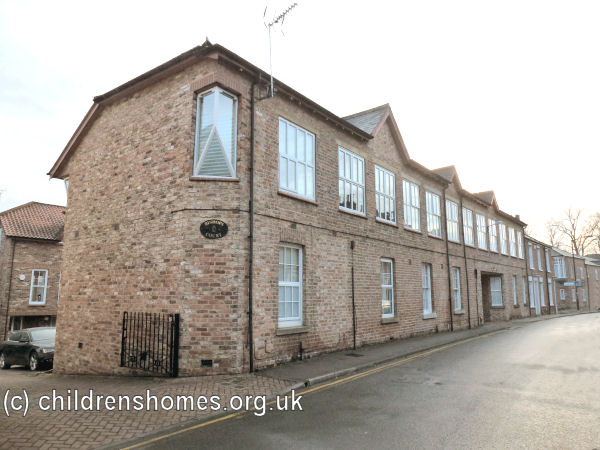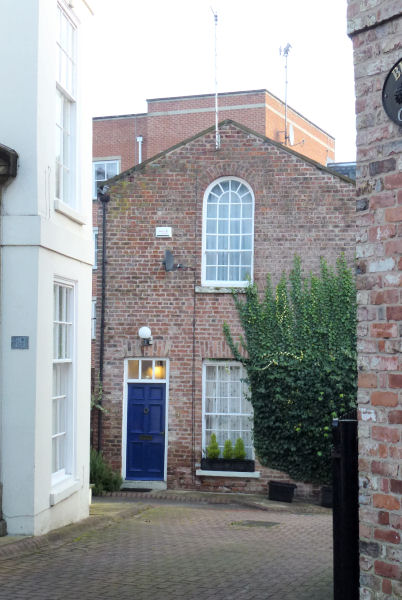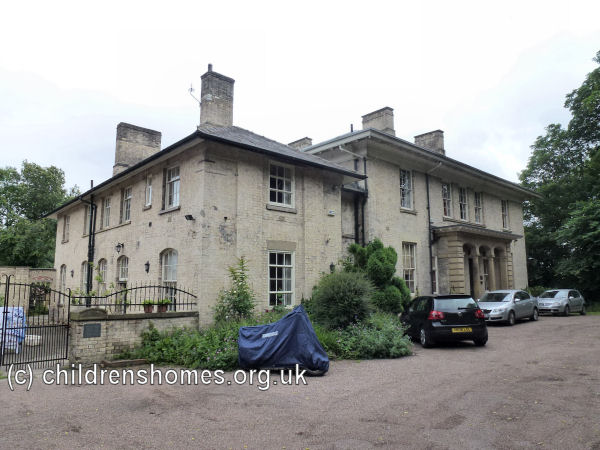York Penitentiary, York, East Riding of Yorkshire
The York Penitentiary Society was founded in 1822 for reforming penitent 'fallen' girls and women. For many years, the Society had no premises of its own. Instead, a small number of 'approved objects' whose 'miseries but not their deserts entitled them to pity and assistance' were sent at the Society's expense to the Penitentiary in Hull. After that institution closed in 1826, cases were placed with with Guardians' Society in Leeds.
In 1844, Dr Stephen Beckwith bequeathed his property at 19 Bishophill to the Society, together with an endowment to support its running costs. The following year, the premises were opened as the Society's residential institution.
'Rules for the Conduct of the Women' at the Penitentiary were displayed on the wall in each room:
I. The directions and orders of the Matron shall at all times be promptly obeyed.
II. The women shall preserve a decent deportment, and a becoming silence, especially while at work. Reproaches for past irregularities , railing, and all angry expressions, are strictly forbidden; and if repeated after admonition from the Matron, shall be reported to the Committee, and punished at their discretion.
III. Lying, swearing, dishonesty, repeated disobedience, and gross misbehaviour, shall be punished by the Committee with expulsion, unless circumstances should induce them to mitigate the punishment.
IV. No woman shall leave her employment without the Matron's permission.
V. The father, mother, or other near relation, (being known to be such,) may be permitted to see and converse with any of the women, at the discretion and in the presence of the Matron, between the hours of eleven and twelve in the morning, and two and three in the afternoon (Sundays excepted.) — But no such person, whether male or female, shall be admitted into the wards.
VI. No letter shall be conveyed to or from the house, without the inspection of the Matron.
In 1884, the Penitentiary could house 16 inmates, with laundry work as the main occupation. No charge was made for admission or residence in the establishment, but inmates were expected to remain for two years. At that date, the superintendent was Miss Briddon. By 1897, the number of places had increased to 25.

Former York Penitentiary, Bishophill, York, 2013.

Former York Penitentiary, Bishophill, York, 2013.
In 1903, the Society established the York Shelter in the adjacent premises at 17 Bishophill, providing temporary accommodation for up to 8 'friendless women'.
By 1912, an age limit of 14 to 25 years had been imposed on those entering the Penitentiary. The superintendent was now Miss Benington
At the Society's annual meeting in 1918, it was agreed to replace the name 'Penitentiary' by 'House of Mercy'. In the same year, the dilapidated Bishophill premises were sold and replaced by a property known as Clifton Holme at Water End, Clifton. The establishment subsequently became known as the York Training Home for Girls, accommodating up to 27 'rescue cases' aged form 16 to 25 years.

Clifton Holme, York, 2013.
On 4 August 1939, Clifton Holme, now accessed via Ousecliffe Gardens, was certified to operate as an Approved School for Junior Girls, aged below the age of 15 at their date of admission.
On March 1st, 1950, it was announced that the Society intended to resign the School's Certificate of Approval and it closed on 31st August, 1950.
In 1953, the property was sold to York Council, with the profits from the sale being used to form the Clifton Holme Trust.
Clifton Holme then became St Hilda's Garth Reception Centre, used to process children coming into the care of the Council's children's department.
The property is now in private residential use.
Records
Note: many repositories impose a closure period of up to 100 years for records identifying individuals. Before travelling a long distance, always check that the records you want to consult will be available.
- York City Archives, York Explore Centre, Museum Street, York YO1 7DS. Holdings include: Minute books (1844-1950); Visiting books (1846-1949); Ladies' Committee reports and correspondence (1822-1935).
- The National Archives, Kew, Richmond, Surrey, TW9 4DU.
Bibliography
- Bartley, Paula Prostitution: Prevention and Reform in England, 1860-1914 (2000, Routledge)
- Finnegan, Frances Poverty and Prostitution: A Study of Victorian Prostitutes in York (1979, CUP)
- Hopkins, Jane Ellice, Work Among the Lost (1870, William Macintosh) Nokes, Harriet Twenty-Three Years in a House of Mercy (1886, Rivingtons)
- Taylor, William J The Story of the Homes (1907, London Female Preventive and Reformatory Institution)
- Thomas, E W Twenty-Five Years' Labour Among the Friendless and Fallen (1897, Shaw)
Links
- None identified at present.
Except where indicated, this page () © Peter Higginbotham. Contents may not be reproduced without permission.


